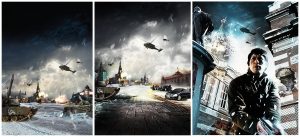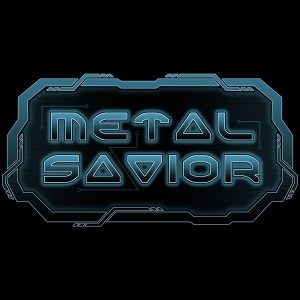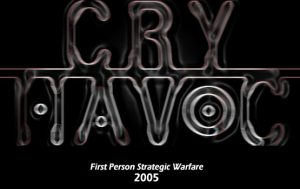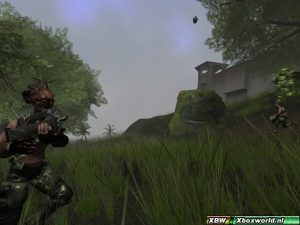Terra: Formations is a canceled first-person shooter with real-time strategy elements developed by Cellien Studios, a two men team subdivision of game company Star Cave Studios, for PC, Playstation 3 and Xbox 360 systems, from 2004 to 2017.
The game was first revealed in the beginning of 2005 by Cellien as a multiplayer FPS using the Torque Engine:
“We at Cellien Studios are developing a game on the Torque game Engine from www.garagegames.com. Terra: Formations is a Sci-Fi FPS game that will be played online much like Unreal Tournament style. The project website is www.terrathegame.com and our studio website is www.cellienstudios.com. So far our studio only consists of two people but for a two man team and only 5 months of development I feel confident that we will be able to release a demo in the coming months so keep an eye out.”
After a year of silence, Gamesindustry announced Terra: Formations, now headed by Star Cave Studios:
“Irish Star Cave Studios Limited proudly announces the development of its first “AAA” title and first multiplatform game, Terra: Formations! In Terra: Formations, players have the freedom to select their preferred style of game play, ranging from high action First Person Shooter (FPS) to more strategic Real-Time Strategy (RTS) in a ranking system set up much like a Role-Playing Game (RPG)! It’s the clash of the titans when it comes to game genres; FPS, RTS and RPG – all tied together in this awesome looking fast-paced, action packed, futuristic Massive Multimedia Online Game (MMOG), also featuring single-player options and adventure elements!
By the year 2157, mankind had depleted the resources of planet earth with his lust for power, technological advancements and greed. Ironically, the very machines that played a role in mankind’s irrevocable position were the only chance of survival! After several years of uncertainty, hope was reborn with the efforts of the Global Military Alliance to Terraform one of earth’s celestial neighbours, Jupiter’s moon called “Europa”. It wasn’t until the excavation of the satellite’s icy crust that mankind learned the truth; he was not alone and something, somewhere, was waiting, watching, learning and preparing for battle!
As a player in Terra: Formations, you join the ranks of an elite military force with the objective of reshaping the environments of inhospitable worlds, experience the evolution of a developing planet, and take command to become humanities only hope for survival in an epic struggle for control of the solar system.
Four classes of characters offer different insight to the chaotic world, each providing a unique blend of interaction. The Soldier faction allows for adrenaline pumping action that players have come to expect from traditional FPS games. As a member of the Engineer class, the player becomes the key element in the development of the environment by constructing and repairing mankind’s lifeline to the world. The Researcher class explores the evolution of the world to enhance society’s tools and develop new technology, and finally the player can opt to take command of the action from the perspective of the Commander class to bring order to an uncertain future, tying RTS elements into Terra: Formations.
Star Cave Studios Limited is a privately owned game development studio based in Ireland, and the cream of Irish developers! Founded in June 2004 by industry veteran Keith Killilea, CEO, its focus is to create state-of-the-art computer games targeted not only at the PC platform, but also the next generation gaming consoles! During the course of 2005, Star Cave Studios Limited acquired Cellien Studios, based in Austin Texas, and Single Cell Games, based in Australia, and has now become the leader of Irish game development!”
After that announce, however, the game was put on-hold indefinitely, before surprisingly coming back from the dead in September 2012 on platforms such as Steam Greenlight and Indiegogo, using this time the Unreal Engine 3:
“In Terra: Formations, players have the freedom to select their preferred style of game play, ranging from intense action First-Person Shooter to more strategic RTS planning in an online multi-player universe.”
The key concepts of Terra can be summarized by the conflicting species, player classes, life forms, technology, locations, and gameplay that are designed to make a genre hybrid, player driven world possible.”
Terra: Formations main features:
Rich, highly detailed, atmospheric and wonderful alien enviroments
Changing environments reflecting your terraforming progress, becoming more habitable and supportive of your species requirements. Tug of War gameplay.
Permanent changes in environments – terraforming levels will remember your changes.
Groundbreaking genre crossing gameplay, combining First Person Shooter with Real-Time Strategy.
Highly detailed player characters, with customizable appearances
RTS online gameplay where you give real players control commands.
Advanced AI Droids for FPS defending & RTS resource play.
4 distinct classes of characters; Soldier (FPS), Commander (RTS), Builder (FPS+RTS), and Medic (FPS).
Hi Tech Weaponry & Several Ground / Air Vehicles
Commander Special Attacks such as air-strikes, cloaking, superweapons.
Aliens have the ability to turn Humans by infestation into fellow Aliens.
Global online points & stats system.
Open Mod System allowing map makers to create new worlds.
“The game was announced back in 2006 for all major platforms from PC to Consoles and the screenshots you see in the Gallery tab at the top of this page is the playable demo from back then! We spared no expense to create “AAA” class graphics, code, game-play and pulled all-nighters with barely no lives at all. To develop the whole game we needed a publisher and in the end Terra needed to be put on hold – until now!“
On the Indiegogo page, we could read further details on the company and some ideas behind that game:
“Based on our funding target, we would expect to nail the deadline for Beta Release in late 2013. We know exactly what we are doing, and as Terra has been many years in the making, we are confident in our deadlines! We will keep you in the loop with our development at all times, and give you a look into the process and progress we are making.”
“Example of how amazing Terra will be, your playing on the multi-player level and the world around not just changes due to the terra-forming but stays changed even when you return later to it! We want to bring you an experience of game-play not done before and a dynamic living world you would expect to be on.”
Unfortunately, the crowdfunding campaign wasn’t a success, the game only collected 75$ on a fixed goal of 175,000. After this failed campaign, Terra: Formations disappeared again, but attended a third comeback, this time in the beginning of 2014. Rebranded as T.E.R.R.A. and using Unity as new engine, the project was slightly different about what was initially planned from it’s former form and was, once again, put on Steam Greenlight:
“We are an small team of 4 so far working on this title but if we are funded we can bring in extra help from our peers to bring the game to an completion stage. For the past few years the game evolved from it’s concept of different demo versions towards today, believe me we have had plenty of time to do trial & error on blending the genre’s! We ended up with the finish concept after all of this to what it is now, so much had changed we changed the name to the current form to represent this.”
The developers managed to release it in Early Access around Spring 2016, but in April 2017, as we could read on the comments section, Starcave decided to rebuild the game to it’s core in order to get significant improvements:
“There was a break in the development, where we were reviewing everything of the Early Access release build and have decided to rebuild the core to make better improvements for between EA to Full release to be as smooth as possible. More updates will appear as soon.”
It will never materialize and, since then, Starcave disappeared from the picture alongside T.E.R.R.A. which isn’t playable anymore.
Images:
Videos:




